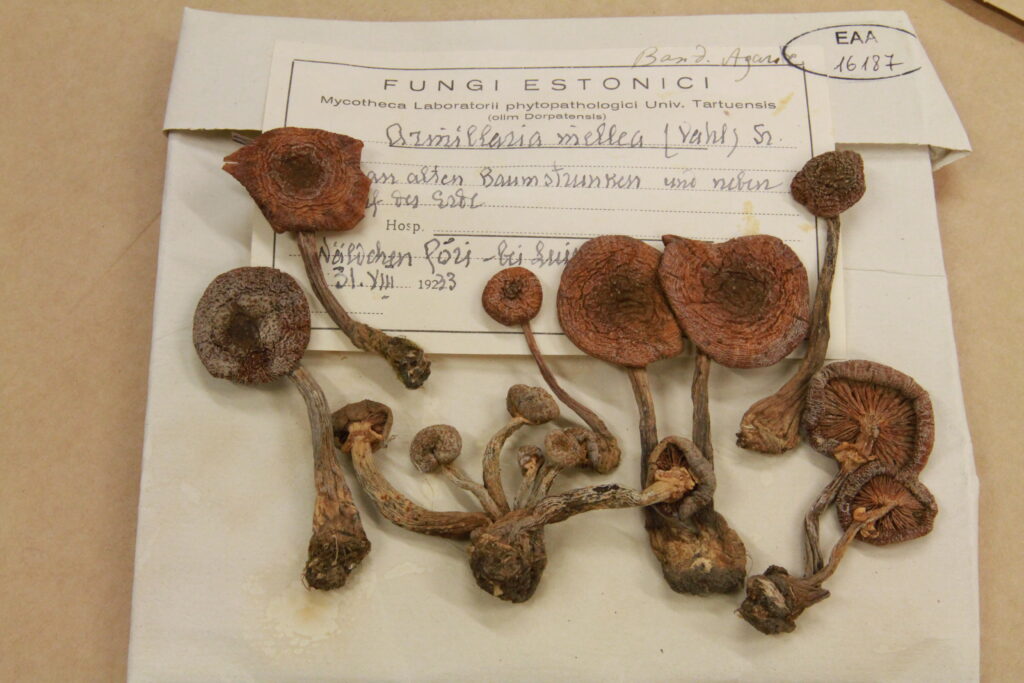The collection was founded in 1922 by the botany professor Fedor Bucholtz (1872–1924), alongside the establishment of the Phytopathological Laboratory and Experimental Station at the University of Tartu. It aimed to identify agricultural fungal pathogens and develop methods to combat them.
Bucholtz’s earlier personal fungal collection had been lost during World War I, leaving a gap in essential fungal specimens needed for teaching and research. To address this, the University of Tartu initially purchased J. A. Bäumler’s exsiccata, which contained approximately 2,500 fungal species.
Farmers were encouraged to send fungal specimens to Tartu and monitor common fungal diseases.
In 1929, Bucholtz’s student Elmar Leppik took over as the head of the station. In 1930, the collection was further enriched by a donation from Bucholtz’s widow, which included part of his life’s work. Additional contributions to the collection came from specimen exchanges with other European institutions, purchases of foreign specimens, and donations from individuals and organizations.
Ants Käsebier (later Käspre) served as assistant director of the station until 1929. Other staff included Richard Tomson (later Toomre), Aleksander Kivilaan (later Kustasson), and occasionally graduate students from the university.

Nikolai Witkowski, known as “Seenevana” (English for “Mushroom Elder”), a skilled identifier of edible and poisonous mushrooms, voluntarily contributed over 600 specimens, primarily from the Tartu and Järvselja areas.
A specimen of Armillaria collected by Nikolai Witkowski on August 31, 1933, from a fallen tree trunk in Kursi parish.
Elmar Leppik emigrated in 1944, but the collection was successfully evacuated from Raadi during the war. In 1951, the collection was transferred to the Estonian Agricultural Academy and got the acronym EAA.
In the last 50 years, the collection has been most extensively curated and expanded by phytopathologist and lecturer Anne-Liis Sõmermaa, who looked after it from 2003–2011. She also led the digitization of the collection’s data.
In 2013, the collection was moved to the Forestry Building of the Estonian University of Life Sciences (EMÜ) and merged with the fungal collection of the former Institute of Zoology and Botany.
An article on the history of the collection was published in Folia Cryptogamica Estonica.